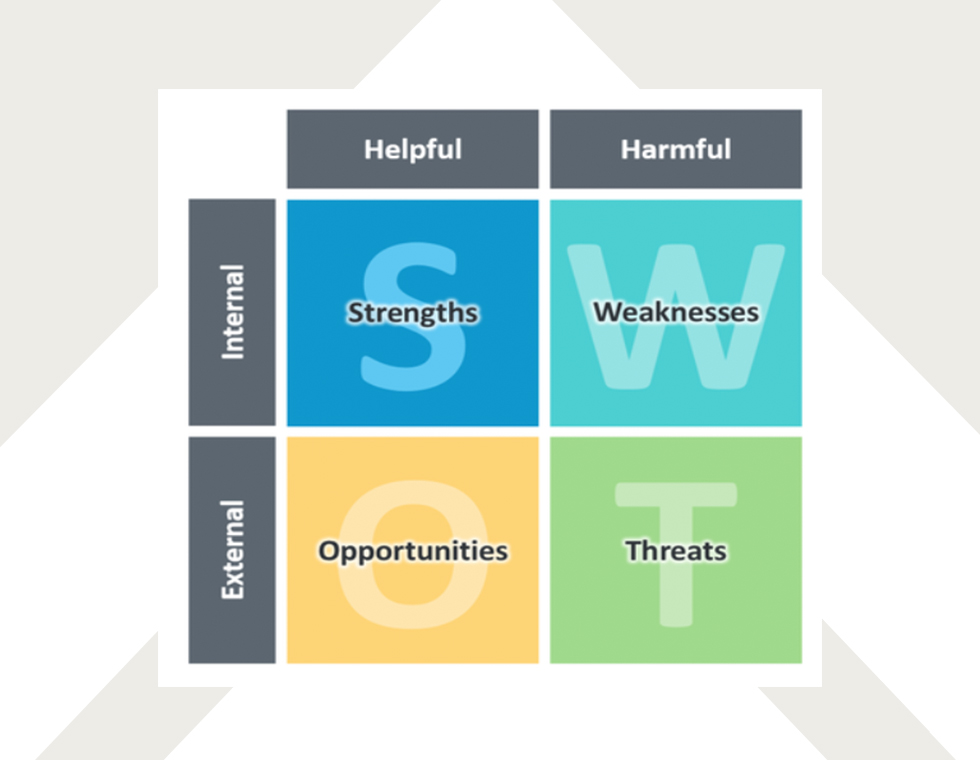
Strategic Frameworks SWOT Analysis
SWOT analysis used to help a person or organization identify the Strengths, Weaknesses, Opportunities, and Threats related to their business, competition or projects. It is intended to specify the objectives of the venture or project and identify the internal and external factors that are favorable and unfavorable to achieving those objectives. Strengths and Weakness are frequently internally-related, while Opportunities and Threats commonly focus on environmental placement. SWOT analysis are best developed in a group setting with an appointed moderator.
Description
SWOT analysis is often combined with a PEST or PESTLE analysis to provide a comprehensive Environmental Scan for the business. Environmental Scans help leaders and managers prioritize issues and the resulting resource allocation.
SWOT analysis has its own weaknesses however. It tends to persuade users to compile lists rather than debating the actual important factors in achieving objectives. It also tends to present the resulting lists uncritically and without clear prioritization or weighting so that, for example, weak opportunities may appear to balance strong threats.
Strengths
Characteristics of the business or project that give it an advantage over others. These should be specific in nature and offer a detailed description of why the particular element is considered a strength.
Weaknesses
Characteristics of the business that place the business or project at a disadvantage relative to others. These should be specific in nature. Focus should be on those weaknesses that materially affect the meeting of future objectives.
Opportunities
Elements in the environment that the business or project could exploit to its advantage. Usually, a business has no shortage of potential opportunities. Focus should be placed on identifying those opportunities with respect to current products/services/resources.
Threats
Elements in the environment that could cause trouble for the business or project. It is often useful to discriminate between current threats and potential threats. Current threats usually require action. Potential threats are often debated philosophically and little action is taken against them. One way to address potential threats is to create trigger points that alert the organization to examine the threat more extensively and take a more aggressive stance toward mitigating the threat.